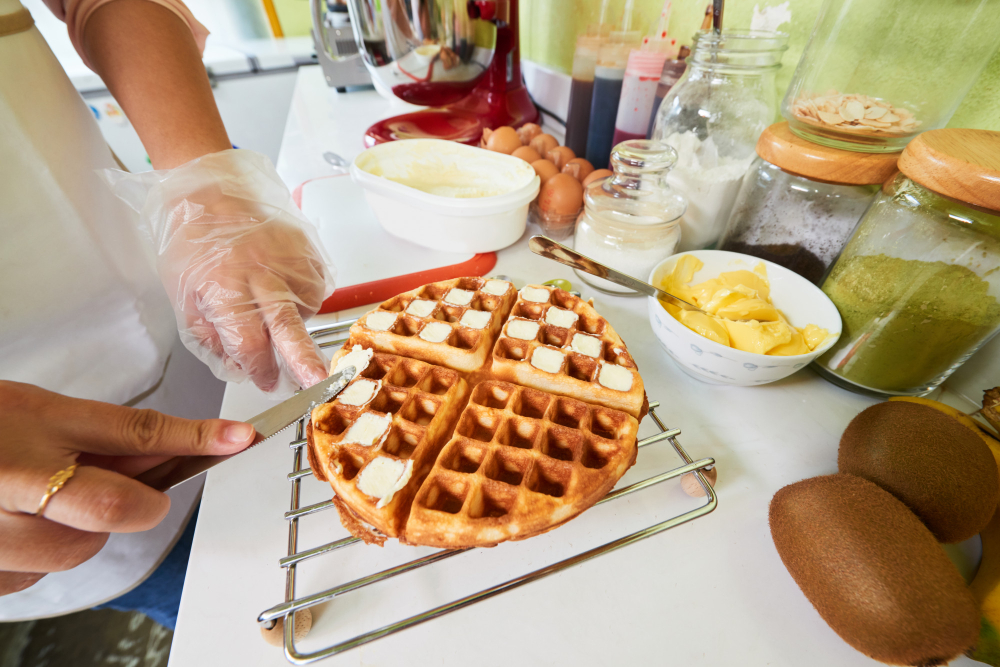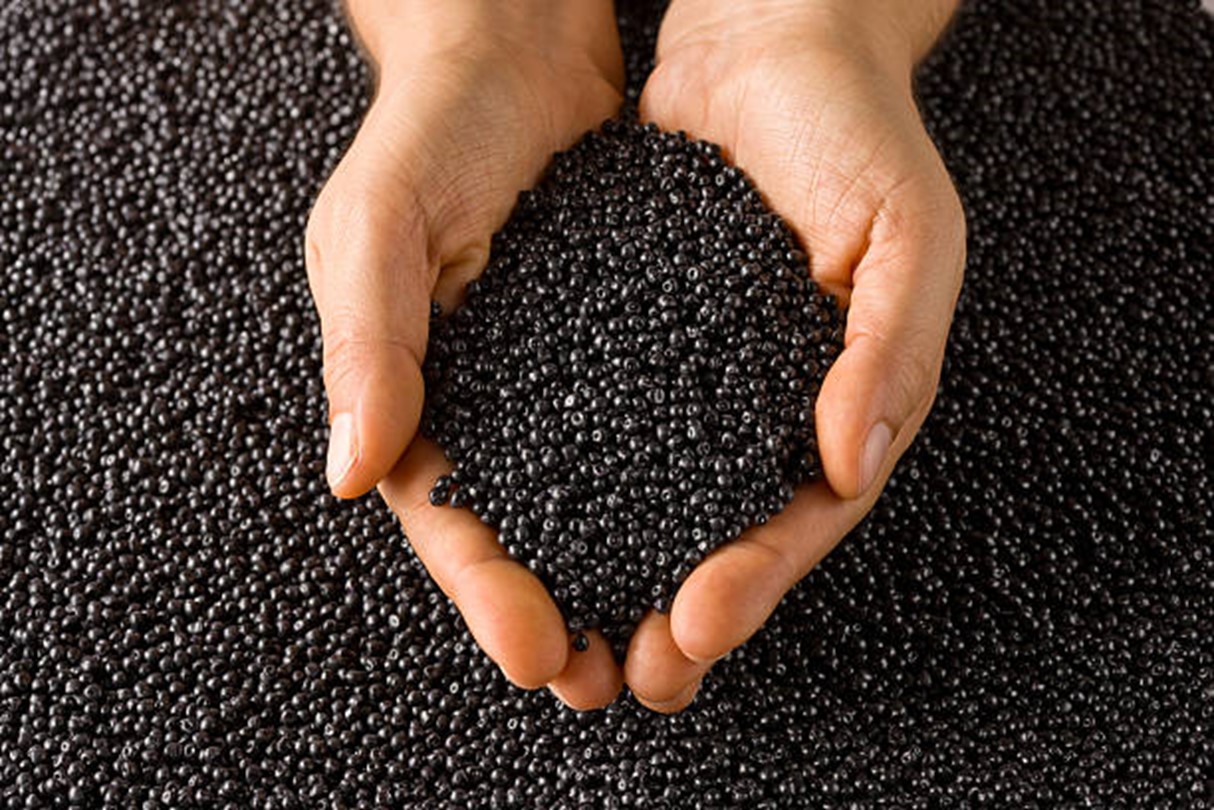In high-volume kitchens, hotels, and quick-service restaurants, delivering waffles with consistent texture is both a challenge and a standard of quality. For chefs and bakers in the professional arena, texture is not left to chance; it is a carefully controlled result of precise formulation, ingredient quality, process control, and equipment calibration. Central to this control is a professionally engineered waffle mix.
Texture consistency in waffles is crucial because it impacts the dining experience, customer satisfaction, and brand reputation. Whether the goal is a light, crisp Belgian waffle or a softer, cake-like variation, professional bakers use a combination of science and artistry to ensure every batch meets exact specifications.
Understanding Waffle Texture
Waffle texture is determined by several key characteristics:
- Crispness: The exterior bite of the waffle, often defined by a golden crust.
- Tenderness: The internal softness that offers a pleasant mouthfeel without becoming soggy.
- Uniformity: Consistency in texture across batches, ensuring the same quality every time.
Achieving these qualities depends on more than the recipe—it involves understanding how each ingredient in the waffle mix contributes to the overall texture.
The Role of Waffle Mix in Texture Control
A professional waffle mix is formulated to deliver consistent performance in high-volume kitchens. It is engineered with precise ratios of flour, leavening agents, fats, sugars, and additional functional ingredients to produce reliable batter characteristics and texture outcomes.
The advantages of using a high-quality waffle mix in professional kitchens include:
- Batch consistency: Ensures texture remains consistent across different shifts and ovens.
- Time efficiency: Reduces mixing time and preparation steps.
- Operational reliability: Minimizes variation due to human error or ingredient inconsistency.
Key Factors in Maintaining Texture Consistency
Professional bakers maintain waffle texture consistency through a combination of ingredient control, mixing technique, fermentation, and cooking precision.
1. Ingredient Quality and Ratio Control
The composition of the waffle mix plays a crucial role in texture. The balance between flour, sugar, fat, and leavening agents determines batter behavior and the final waffle structure.
- Flour: The protein content affects gluten development. Higher protein flours create more structure and chewiness, while lower protein flours result in a softer texture.
- Leavening agents: Baking powder or soda influence batter rise, texture, and crumb structure. Professional mixes often use a calibrated blend to ensure uniform puff and structure.
- Fats: Oil or butter content affects tenderness and crispness. Precise fat ratios ensure the waffle surface browns evenly while maintaining moisture inside.
- Sugars: Influence caramelization, color, and crispness. Balancing sugar type and quantity is key to consistent texture.
Professional kitchens often use standardized waffle mixes that have been tested for optimal ratios to deliver the desired texture repeatedly.
2. Mixing Protocols
Mixing technique significantly affects texture consistency. Overmixing develops excess gluten, resulting in a tough waffle, while undermixing leaves lumps and uneven texture.
Professional bakers use controlled mixing protocols, often relying on automated mixers and timers to maintain uniform batter consistency. This minimizes variability between batches, especially in high-output environments where multiple staff members work on production.
3. Batter Resting and Fermentation
Batter resting is a technique used in professional kitchens to stabilize texture. Allowing batter to rest before cooking improves hydration of flour and allows leavening agents to work evenly, resulting in a more consistent crumb structure.
Some kitchens use short fermentation periods to enhance texture and flavor, particularly for artisan-style waffles. However, fermentation requires careful time control to avoid over-proofing, which can compromise texture.
4. Temperature and Cooking Control
Texture consistency also depends heavily on cooking conditions. Inconsistent cooking temperature or time can alter texture significantly, producing waffles that are uneven in color, crispness, and internal structure.
Professional kitchens use calibrated waffle irons with controlled temperature settings to ensure each waffle cooks identically. Automated machines with programmable settings are especially valuable in high-volume settings, as they eliminate human error and maintain product uniformity.
Strategies for Maintaining Texture at Scale
In large-scale bakery or HORECA environments, maintaining waffle texture consistency requires more than just quality ingredients. Chefs employ several strategies:
- Standard Operating Procedures (SOPs): Detailed protocols for mixing, resting, cooking, and storage ensure every batch meets quality standards.
- Batch Testing: Regular quality checks monitor texture, moisture level, and appearance to maintain product consistency.
- Ingredient Calibration: Measuring humidity, protein content in flour, and freshness of leavening agents ensures the waffle mix performs consistently.
- Staff Training: Educating kitchen teams about texture goals and mixing protocols minimizes variability caused by human handling.
These strategies ensure that waffles meet quality expectations regardless of production volume or staff shift changes.
Advanced Ingredient Science in Waffle Mixes
High-quality professional waffle mixes often incorporate advanced ingredient technology to improve texture control:
- Modified starches: Enhance crispness while retaining internal moisture.
- Emulsifiers: Improve batter stability, texture uniformity, and shelf life.
- Enzymes: Support gluten development and improve batter extensibility, contributing to uniform texture.
These innovations help professional kitchens maintain consistent waffle quality while streamlining production processes.
Conclusion
Maintaining texture consistency in waffles requires an integrated approach combining science, process discipline, and ingredient quality. For professional bakers and chefs, a well-formulated waffle mix serves as the foundation for this control, ensuring that every batch meets exacting standards.
By standardizing ingredients, optimizing mixing protocols, controlling fermentation, and calibrating cooking conditions, professional kitchens can deliver waffles with uniform texture, appearance, and taste every time. This consistency is not just a mark of quality—it is a testament to the precision, craftsmanship, and operational excellence that define professional baking.
FAQs
Q1. How does a waffle mix help in maintaining texture consistency?
A professionally formulated waffle mix ensures precise ratios of flour, fat, sugar, and leavening agents, delivering consistent texture batch after batch.
Q2. What factors influence waffle texture in professional kitchens?
Texture is influenced by ingredient quality, mixing technique, batter hydration, resting time, and cooking conditions.
Q3. Why is batter resting important for waffle texture?
Resting allows hydration of flour and even distribution of leavening agents, producing a uniform crumb and texture.
Q4. How do professional kitchens ensure consistent waffle cooking?
By using calibrated waffle irons with controlled temperature settings and standard operating procedures.
Q5. What advanced ingredients help waffle mixes perform consistently?
Modified starches, emulsifiers, and enzymes enhance batter stability, crispness, and texture uniformity.



